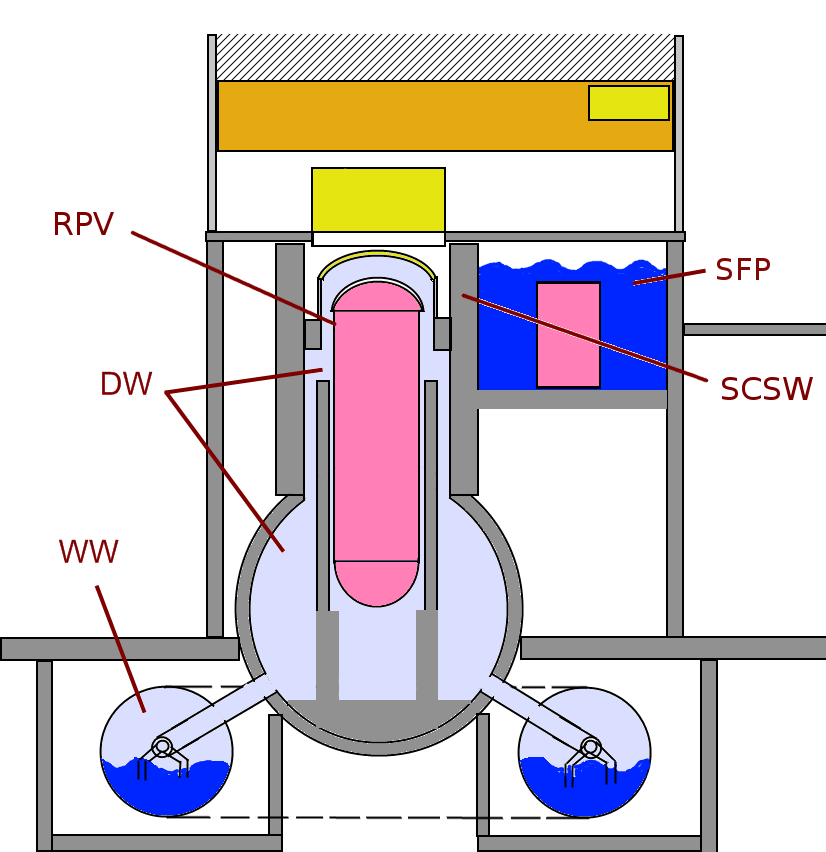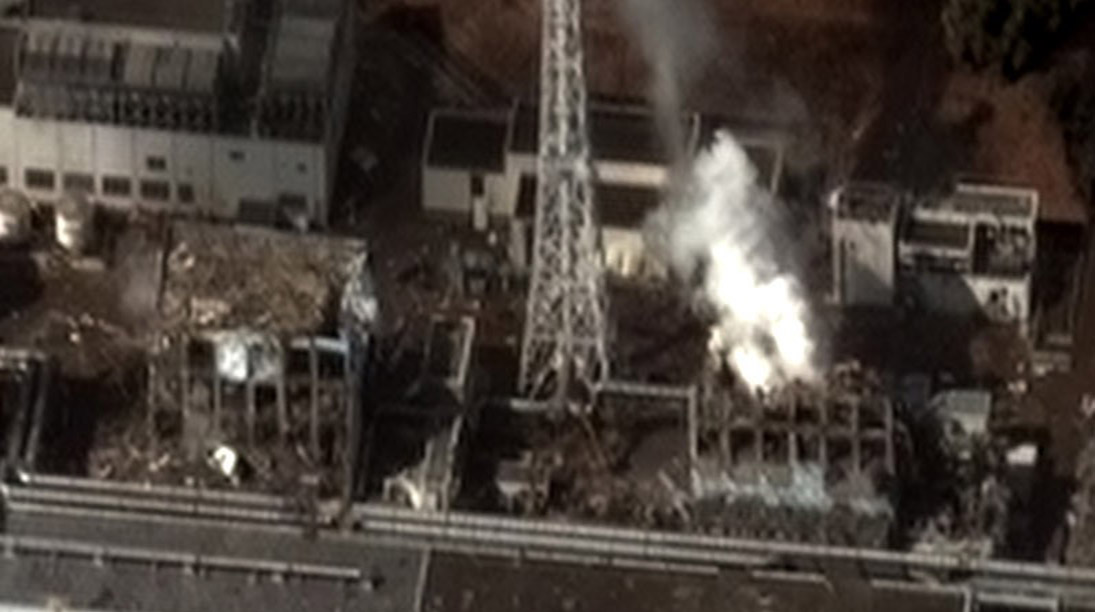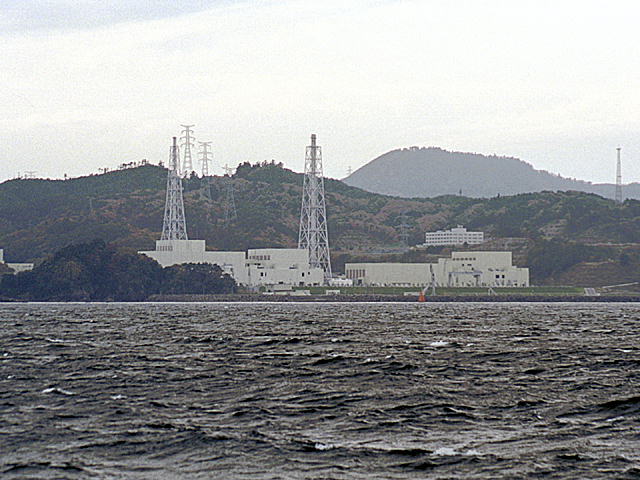|
Japan Atomic Energy Research Institute
The Japan Atomic Energy Research Institute ( ja, 日本原子力研究所) (JAERI) is a former semi-governmental organization that existed for the purpose of further nuclear power in Japan. It was created in June 1956 by the Atomic Energy Basic Law. It merged with Japan Nuclear Cycle Development Institute and became Japan Atomic Energy Agency on October 1, 2005, which currently carries out the purpose outlined in the law. It was called Genken (原研) for short. Development A small number of researchers in Japan studied at Argonne National Laboratory in America with the purpose of gaining knowledge that could be taken back to Japan in 1955. Kinichi Torikai was one of those researchers, and he later became president of JAERI. After returning, facilities for nuclear research were established in Tōkai, Ibaraki. In the 1950s, it was decided that individual electric utilities would import reactor types to meet the rapidly increasing demand for energy in the post-war Japan. In September ... [...More Info...] [...Related Items...] OR: [Wikipedia] [Google] [Baidu] |
Atomic Energy Basic Law
{{Nihongo, The Atomic Energy Basic Law, 原子力基本法, Genshi-ryoku Kihon Hō, Act No. 186 of 1955, lead=yes is a Japanese law passed December 19, 1955. It outlined the basics for the use of nuclear power in Japan. Overview Article 1 (Objective) The objective of this Law should be to secure energy resources in the future, to achieve the progress of science and technology and the promotion of industries by fostering the research, development and utilization of atomic energy and thereby to contribute to the welfare of mankind and to the elevation of the national living standard. Article 2 (Basic policy) The research, development and utilization of atomic energy shall be limited to peaceful purposes, aimed at ensuring safety and performed independently under democratic management, the results therefrom shall be made public to contribute to international cooperation. *Article 3 outlines definitions. *Articles 4-6 create the Japanese Atomic Energy Commission and the Nuclear Saf ... [...More Info...] [...Related Items...] OR: [Wikipedia] [Google] [Baidu] |
Japan Nuclear Cycle Development Institute
The Japan Nuclear Cycle Development Institute (JNC) was formed in October 1998 to develop advanced nuclear energy technology to complete the nuclear fuel cycle, particularly fast breeder reactors, advanced reprocessing, plutonium fuel fabrication and high-level radioactive waste management. It succeeded the Power Reactor and Nuclear Fuel Development Corporation (PNC). It merged with the Japan Atomic Energy Research Institute The Japan Atomic Energy Research Institute ( ja, 日本原子力研究所) (JAERI) is a former semi-governmental organization that existed for the purpose of further nuclear power in Japan. It was created in June 1956 by the Atomic Energy Basic Law ... (JAERI) in October 2005, becoming the Japan Atomic Energy Agency (JAEA). See also * Nuclear power in Japan References Official siteon the JAEA site History of Japan Nuclear Cycle Development Institute {{Authority control Nuclear technology organizations of Japan ... [...More Info...] [...Related Items...] OR: [Wikipedia] [Google] [Baidu] |
Japan Atomic Energy Agency
The is an Independent Administrative Institution formed on October 1, 2005 by a merger of two previous semi-governmental organizations. While it inherited the activities of both JNC and JAERI, it also inherited the nickname of JAERI, "Genken" 原研, an abbreviated word for "nuclear research". On April 10, 2007, JAEA officially joined the GNEP alliance. The other members in the alliance are Areva, Washington Group International and BWX. It is expected that the experience gained from the Rokkasho centrifuge enrichment plant will be a key contribution from JAEA. On April 1, 2016, JAEA transferred some of its laboratories to the National Institute of Radiological Sciences (NIRS), and the NIRS body was renamed to the National Institutes for Quantum and Radiological Science and Technology (QST) which includes existing laboratories of the NIRS. In 2018 JAEA estimated it would need about 1.9 trillion yen ($17.1 billion) to decommission 79 facilities over 70 years. Overview *Est ... [...More Info...] [...Related Items...] OR: [Wikipedia] [Google] [Baidu] |
Argonne National Laboratory
Argonne National Laboratory is a science and engineering research national laboratory operated by UChicago Argonne LLC for the United States Department of Energy. The facility is located in Lemont, Illinois, outside of Chicago, and is the largest national laboratory by size and scope in the Midwest. Argonne had its beginnings in the Metallurgical Laboratory of the University of Chicago, formed in part to carry out Enrico Fermi's work on nuclear reactors for the Manhattan Project during World War II. After the war, it was designated as the first national laboratory in the United States on July 1, 1946. In the post-war era the lab focused primarily on non-weapon related nuclear physics, designing and building the first power-producing nuclear reactors, helping design the reactors used by the United States' nuclear navy, and a wide variety of similar projects. In 1994, the lab's nuclear mission ended, and today it maintains a broad portfolio in basic science research, energy ... [...More Info...] [...Related Items...] OR: [Wikipedia] [Google] [Baidu] |
Tōkai, Ibaraki
is a village located in Ibaraki Prefecture, Japan. , the village had an estimated population of 37,651 in 15,148 households and a population density of 991 persons per km2. The percentage of the population aged over 65 was 25.8%. The total area of the village is . The Japan Atomic Energy Agency along with other organizations currently operate a number of nuclear technology research facilities in the town. In particular, Tōkai Nuclear Power Plant is located in Tōkai. Geography Located in central Ibaraki Prefecture, approximately north of Tokyo, Tōkai is bordered to the east by the Pacific Ocean. The village is about 15 kilometers northeast of the prefectural capital of Mito. with the Kuji River to the north. The area is located at the northern end of the Hitachi Plateau, and consists of lowlands which are alluvium and covered with rice paddy fields, and the plateau is diluvial, with upland fields and flatland forests. Surrounding municipalities Ibaraki Prefecture * Hitachi ... [...More Info...] [...Related Items...] OR: [Wikipedia] [Google] [Baidu] |
Nuclear Fuel Industries
Nuclear may refer to: Physics Relating to the nucleus of the atom: *Nuclear engineering * Nuclear physics * Nuclear power * Nuclear reactor * Nuclear weapon * Nuclear medicine * Radiation therapy * Nuclear warfare Mathematics * Nuclear space * Nuclear operator * Nuclear congruence * Nuclear C*-algebra Biology Relating to the nucleus of the cell: * Nuclear DNA Society *Nuclear family, a family consisting of a pair of adults and their children Music * "Nuclear" (band), group music. * "Nuclear" (Ryan Adams song), 2002 *"Nuclear", a song by Mike Oldfield from his '' Man on the Rocks'' album * ''Nu.Clear'' (EP) by South Korean girl group CLC See also * Nucleus (other) * Nucleolus *Nucleation *Nucleic acid Nucleic acids are biopolymers, macromolecules, essential to all known forms of life. They are composed of nucleotides, which are the monomers made of three components: a 5-carbon sugar, a phosphate group and a nitrogenous base. The two main cl ... * Nucular ... [...More Info...] [...Related Items...] OR: [Wikipedia] [Google] [Baidu] |
Tōkai Nuclear Power Plant
The was Japan's first commercial nuclear power plant. The first unit was built in the early 1960s to the British Magnox design, and generated power from 1966 until it was decommissioned in 1998. A second unit, built at the site in the 1970s, was the first in Japan to produce over 1000 MW of electricity. The site is located in Tokai in the Naka District in Ibaraki Prefecture, Japan and is operated by the Japan Atomic Power Company. The total site area amounts to 0.76 km2 (188 acres) with 0.33 km2, or 43% of it, being green area that the company is working to preserve. The plant has been not operational since the reactor shut down automatically due to the 2011 Tōhoku earthquake and tsunami. Reactors on site Unit 1 This reactor was built based on British developed Magnox technology for dual-use. Unit 1 will be the first nuclear reactor to be decommissioned in Japan. The experience in decommissioning this plant is expected to be of use in the future when mor ... [...More Info...] [...Related Items...] OR: [Wikipedia] [Google] [Baidu] |
2011 Japanese Nuclear Accidents
The was a nuclear accident in 2011 at the Fukushima Daiichi Nuclear Power Plant in Ōkuma, Fukushima, Japan. The Proximate and ultimate causation, proximate cause of the disaster was the 2011 Tōhoku earthquake and tsunami, which occurred on the afternoon of 11 March 2011 and remains the most powerful earthquake ever recorded in Japan. The earthquake triggered a powerful tsunami, with 13–14-meter-high waves damaging the nuclear power plant's emergency diesel generators, leading to a loss of electric power. The result was the most severe nuclear accident since the Chernobyl disaster in 1986, classified as level seven on the International Nuclear Event Scale (INES) after initially being classified as level five, and thus joining Chernobyl as the only other accident to receive such classification. While the 1957 Kyshtym disaster, explosion at the Mayak facility was the second worst by radioactivity released, the INES ranks incidents by impact on population, so Chernobyl (335,000 ... [...More Info...] [...Related Items...] OR: [Wikipedia] [Google] [Baidu] |
Fukushima I Nuclear Accidents
The was a nuclear accident in 2011 at the Fukushima Daiichi Nuclear Power Plant in Ōkuma, Fukushima, Japan. The proximate cause of the disaster was the 2011 Tōhoku earthquake and tsunami, which occurred on the afternoon of 11 March 2011 and remains the most powerful earthquake ever recorded in Japan. The earthquake triggered a powerful tsunami, with 13–14-meter-high waves damaging the nuclear power plant's emergency diesel generators, leading to a loss of electric power. The result was the most severe nuclear accident since the Chernobyl disaster in 1986, classified as level seven on the International Nuclear Event Scale (INES) after initially being classified as level five, and thus joining Chernobyl as the only other accident to receive such classification. While the 1957 explosion at the Mayak facility was the second worst by radioactivity released, the INES ranks incidents by impact on population, so Chernobyl (335,000 people evacuated) and Fukushima (154,000 evacu ... [...More Info...] [...Related Items...] OR: [Wikipedia] [Google] [Baidu] |
Japanese Nuclear Incidents ...
This is a list of Japanese atomic, nuclear and radiological accidents, incidents and disasters. List List of plants affected by 2011 Tōhoku earthquake and tsunami * Onagawa Nuclear Power Plant * Higashidōri Nuclear Power Plant * Tōkai Nuclear Power Plant * Tsuruga Nuclear Power Plant * Rokkasho Reprocessing Plant See also * Nuclear power in Japan * List of civilian nuclear accidents * List of civilian nuclear incidents * List of civilian radiation accidents * List of military nuclear accidents References {{DEFAULTSORT:Japanese nuclear incidents Nuclear accidents and incidents Nuclear history of Japan Nuclear Nuclear technology-related lists Nuclear Nuclear may refer to: Physics Relating to the nucleus of the atom: *Nuclear engineering *Nuclear physics *Nuclear power *Nuclear reactor *Nuclear weapon *Nuclear medicine *Radiation therapy *Nuclear warfare Mathematics *Nuclear space * Nuclear ... [...More Info...] [...Related Items...] OR: [Wikipedia] [Google] [Baidu] |
Japanese Reaction To Fukushima I Nuclear Accidents
The Japanese reaction occurred after the Fukushima Daiichi nuclear disaster, following the 2011 Tōhoku earthquake and tsunami. A nuclear emergency was declared by the government of Japan on 11 March. Later Prime Minister Naoto Kan issued instructions that people within a zone around the Fukushima Daiichi nuclear plant must leave, and urged that those living between 20 km and 30 km from the site to stay indoors. The latter groups were also urged to evacuate on 25 March. Japanese authorities admitted that lax standards and poor oversight contributed to the nuclear disaster. The government came under fire for their handling of the emergency, including the slow release of data on areas which were likely to be exposed to the radioactive plume from the reactor, as well as the severity of the disaster. The accident is the second biggest nuclear accident after the Chernobyl disaster, but is more complicated as three reactors suffered at least partial meltdowns. Once a p ... [...More Info...] [...Related Items...] OR: [Wikipedia] [Google] [Baidu] |
Nuclear Power In Japan
Prior to the 2011 Tōhoku earthquake and tsunami, Japan had generated 30% of its electrical power from nuclear reactors and planned to increase that share to 40%. Nuclear power energy was a national strategic priority in Japan. , of the 54 nuclear reactors in Japan, there were 42 operable reactors but only 9 reactors in 5 power plants were actually operating. A total of 24 reactors are scheduled for decommissioning or are in the process of being decommissioned. Others are in the process of being reactivated, or are undergoing modifications aimed to improve resiliency against natural disasters; Japan's 2030 energy goals posit that at least 33 will be reactivated by a later date. Though all of Japan's nuclear reactors successfully withstood shaking from the Tohoku earthquake, flooding from the ensuing tsunami caused the failure of cooling systems at the Fukushima I Nuclear Power Plant on 11 March 2011. Japan's first-ever nuclear emergency was declared, and 140,000 residents w ... [...More Info...] [...Related Items...] OR: [Wikipedia] [Google] [Baidu] |





